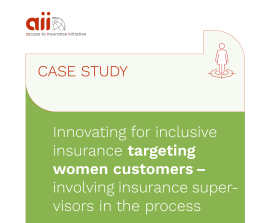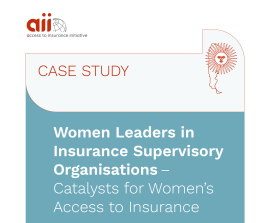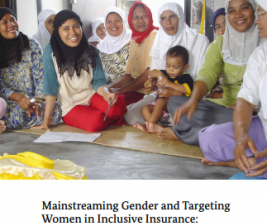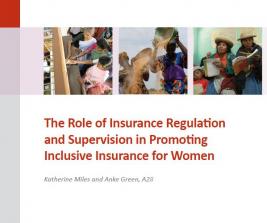Download below in English, French, and Spanish.
Women's access to insurance contributes to the mandate of insurance supervisors to maintain a fair, safe, and stable insurance market, and more broadly, sustainable development. Yet, this potential of women's insurance is still to be realised as available data indicates women are currently underserved by the insurance sector. This very much reflects the wider context of the persistent financial inclusion gender gap. While it is generally understood that women's access to insurance is low in emerging markets, the precise situation is unclear due to insufficient sex-disaggregated data at the national, regional or international level. Nevertheless, many multistakeholder partnerships are advancing women's access to insurance by increasing the supply of tailored solutions. These customer-centric products address women-specific risks, vulnerabilities and access constraints and have proven successful in increasing insurance penetration among women in some markets.
Insurance regulatory and supervisory approaches have the potential to facilitate women's access to inclusive insurance and hence, improve their financial resilience and advance the cause of gender equality. Insurance supervisors can play a crucial role in boosting women's access to insurance through collecting and using sex-disaggregated supply and demand-side insurance data. This data can be used to track progress on inclusive access and inform evidence- based policymaking and highlight the business case to insurers of serving the women's market. Additionally, the gender dimensions of inclusive insurance can be integrated into national financial inclusion strategies (NFIS). Supervisors can promote market development opportunities for new types of insurance products tailored to the needs of different client groups. They can additionally incentivise gender-smart innovation in insurance through proportionate regulation, product approval and regulatory sandboxes. There is also an important role for supervisors to increase women's participation in their own operations and into the broader insurance sector.











